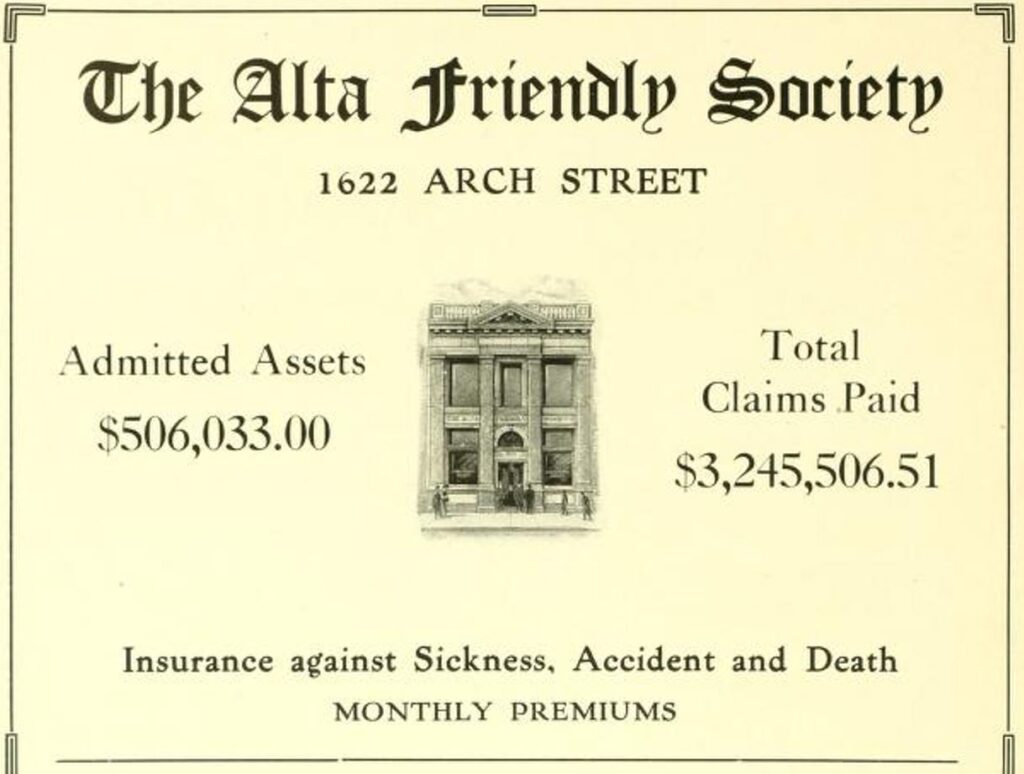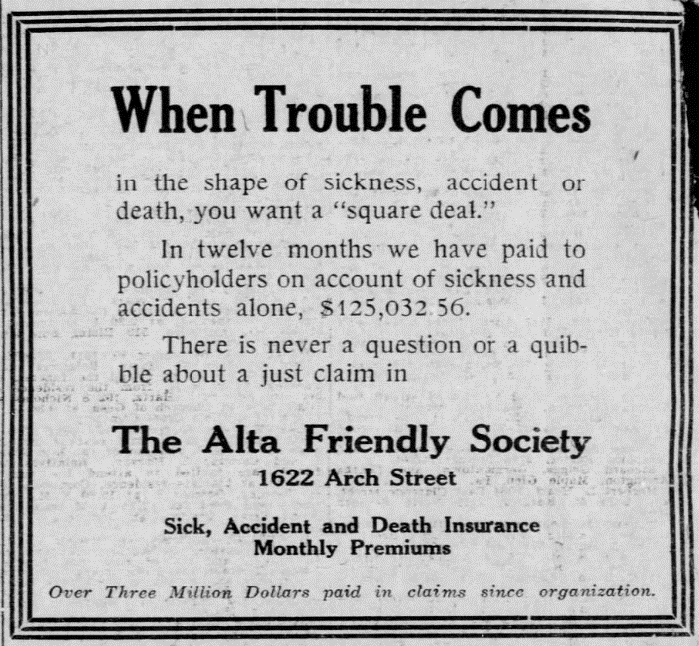“Who knows the future,” asked Marcus F. Pitts, superintendent of the Alta Friendly Society in the 1910 edition of The Philadelphia Colored Directory: A Handbook of the Religious, Social, Political, Professional, Business and other Activities of the Negroes of Philadelphia. “Protection is needed,” he warned, inviting potential members to stop by “the largest and strongest beneficial organization in Pennsylvania” in its new headquarters at 1622 Arch Street.

What’s a Friendly Society? For that, “we shall have to go back some three hundred years in our search for the foundation from which Forestry, Oddfellowship, Shepherdry, Druidism, &c.” to get a handle on those institutions “whose vacant niches the modern Friendly Societies fill,” explained the author of a history of the movement. The year that history rolled off the presses – 1886 – was about the same time sibling societies were thriving throughout Britain and getting a small foothold in the United States. In Philadelphia, the Fidelity Mutual Aid Association went so far as to change its name to the historically venerable, if opaque and appealingly quirky Alta Friendly Society.
British Prime Minister William Gladstone explained Friendly Societies plainly: “You go into these societies to seek your own good through the good of others.” They originated in Great Britain and hundreds more “scattered throughout the world” assuring that subscribers would receive aid when they encountered illness, death, birth, fires, or unemployment. Philadelphia had seen the likes of Friendly Societies as early as the 1790s when, a full century earlier, the African Friendly Society of St. Thomas’s issued certificates for members. But they were few and far between.

(Sources: John Frome Wilkinson, The Friendly Society Movement: its origin, rise, and growth; its social, moral, and educational influences; the affiliated orders (London: Longmans, Green, 1886); The Philadelphia Inquirer, January 25, 1887, “The Friendly Society Movement; “Alta Friendly Society,” January 20, 1906; The Philadelphia Inquirer, Saturday, January 20, 1906; The Philadelphia Real Estate Record and Builders’ Guide, vol. 21, 1906; The Philadelphia Inquirer, October 4, 1934, “Girard’s Talk of the Day.”)

